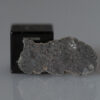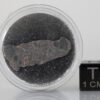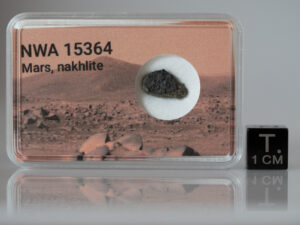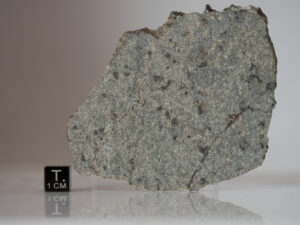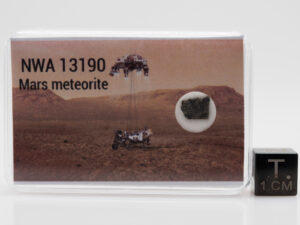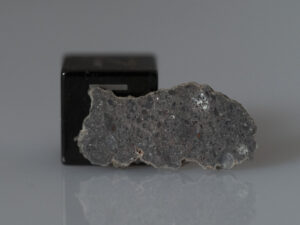Description
Tisserlitine 001 is an unusual and distinctive lunar specimen that is the only meteorite to be classified as having undergone hydrothermal activities*.
Tisserlitine 001 21.325°N, 0.729°E
Gao, Mali
Find: 2019 Dec
Classification: Lunar meteorite (feldspathic breccia)
History: Beginning in December 2019 many similar dark stones were found together in the Kidal region of Mali, close to the border with Algeria. One very large stone (40026 g), another stone (4037 g) and 44 smaller stones (combined weight 3642 g) (total weight 47705 g) were purchased by Aziz Habibi in January 2020 from an Algerian dealer and subsequently acquired by Darryl Pitt. Independently, ten other stones of the same distinctive material (combined weight 8536 g) plus many smaller fragments (combined weight 1169 g) were purchased by Mbark Arjdal in February and March 2020 from a relative of the same Algerian dealer.
Physical characteristics: All specimens (many of which have a flattened slab-like form) lack fusion crust and exhibit medium-brown, “knobby” exterior surfaces. Interiors of stones have an overall tan to pinkish hue with obvious light gray, dark gray and whitish clasts plus some visible small grains of metal.
Petrography: (A. Irving, UWS and P. Carpenter, WUSL) Two separate endcut specimens were studied. Both are samples of the same breccia material, composed of mineral clasts of anorthite, olivine, pigeonite, subcalcic augite, augite and orthopyroxene, plus sparse lithic clasts of spinel troctolite, set in a fine grained microvesicular matrix containing accessory altered kamacite, troilite, taenite and pentlandite. Secondary calcite is present pervasively in one of the two specimens studied and in places may be replacing original glass. Olivine grains in both studied specimens have been partially replaced by inhomogeneous phyllosilicate-rich assemblages, which apparently are hydroxylated (as evidenced by systematically low oxide analytical sums of 88-90 wt.% and absence of measurable F and Cl), and which are very Mn-deficient (yielding very elevated FeO/MnO ratios in the range 150-250). Troctolitic clasts are composed predominantly of anorthite and olivine with accessory Cr-pleonaste, low-Ca pyroxene and/or higher-Ca pyroxene.
Geochemistry: Olivine (Fa17.3-32.1, FeO/MnO = 76-100, N = 15), anorthite (An95.4-99.0Or0.2-0.0, N = 7), pigeonite (Fs18.2-26.8Wo12.4-4.7, FeO/MnO = 47-54, N = 6), orthopyroxene (Fs16.0-21.6Wo2.2-3.7, FeO/MnO = 51-66, N = 4), subcalcic augite (Fs15.9Wo31.0, FeO/MnO = 41), augite (Fs7.6-7.9Wo42.9-45.6; Fs13.8Wo38.9; FeO/MnO = 36-48, N = 3). Troctolite clast: olivine (Fa18.2-21.2, FeO/MnO = 84-92, N = 4), anorthite (An97.7Or0.0), pleonaste (mg = 0.721, cr = 0.093).
Classification: Lunar (feldspathic regolithic breccia, partially hydrothermally-altered).
Specimens: 37.6 g in the form of two polished endcuts at UWB; remainder with DPitt and Mr. M. Arjdal.
*Kartashov, P.M., Mokhov, A.V, Gornostaeva, T.A., Bogatikow, O.A., “Signs of Hydrothermal Activity in Lunar Rocks According to the Data of a Regolith Investigation,” Doklady Earth Sciences, Volume 480, Issue 2 (2018), pp.810-813



